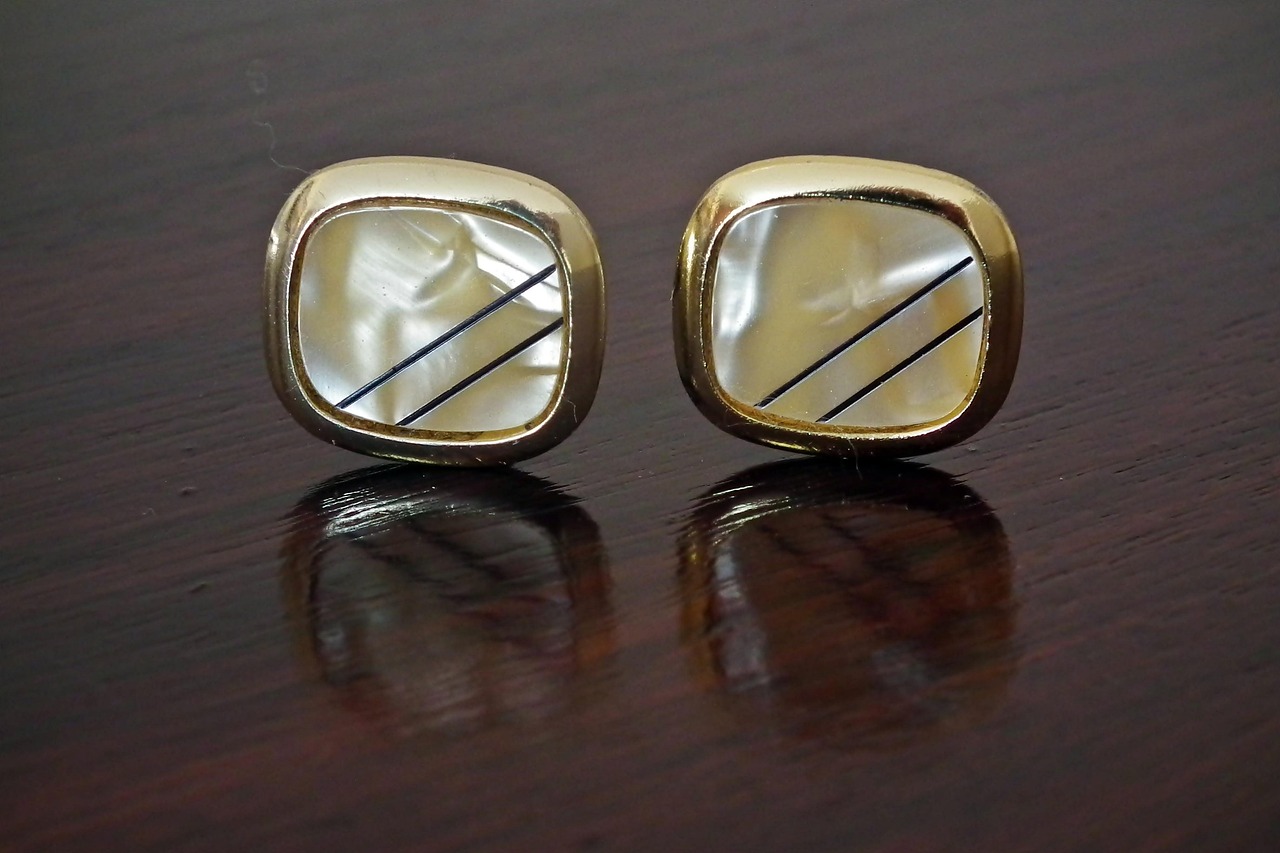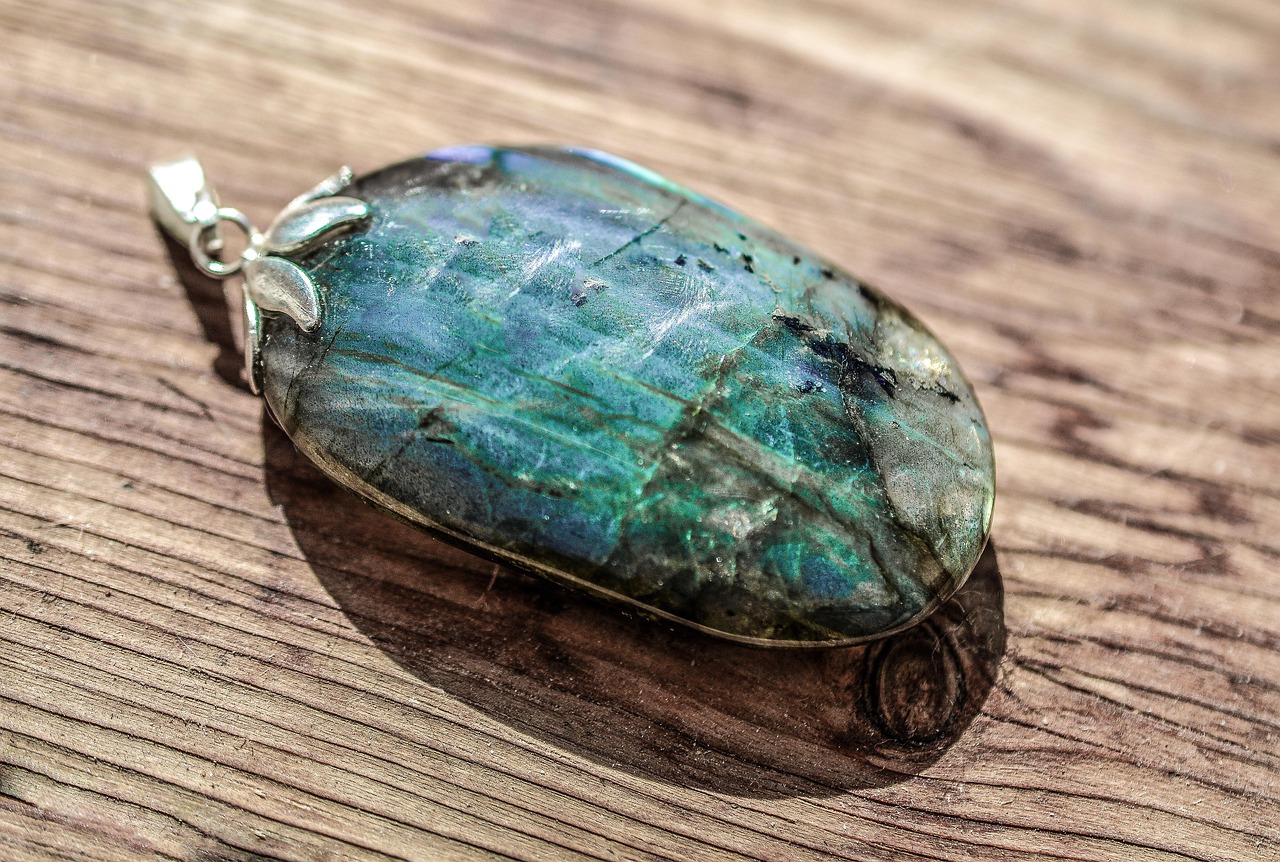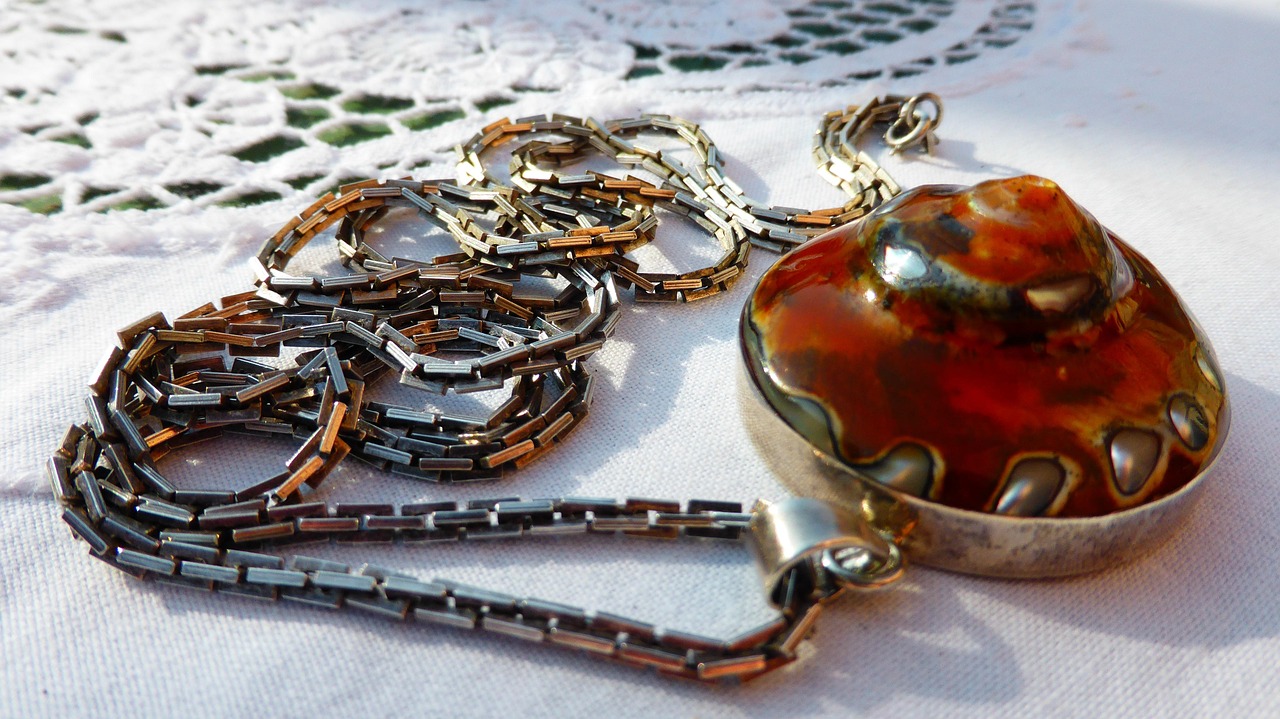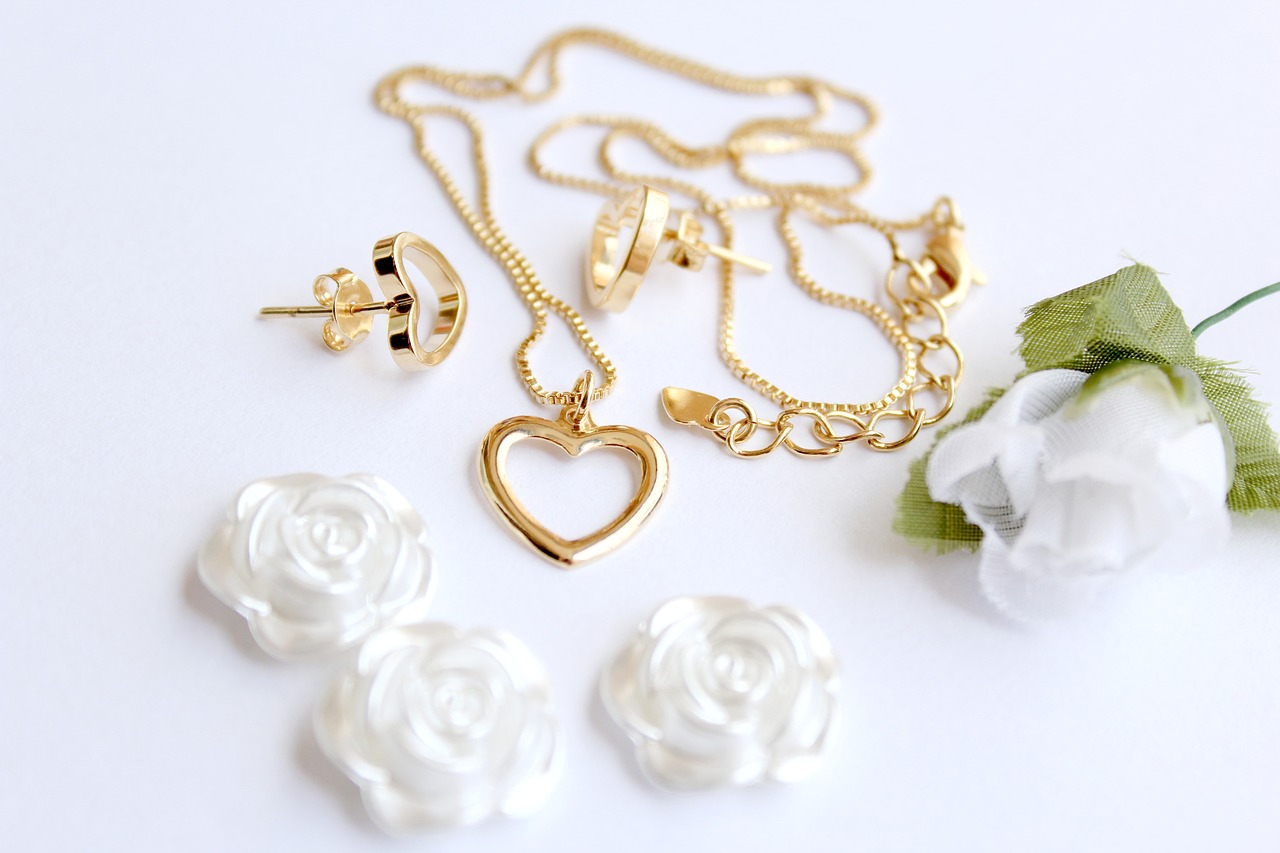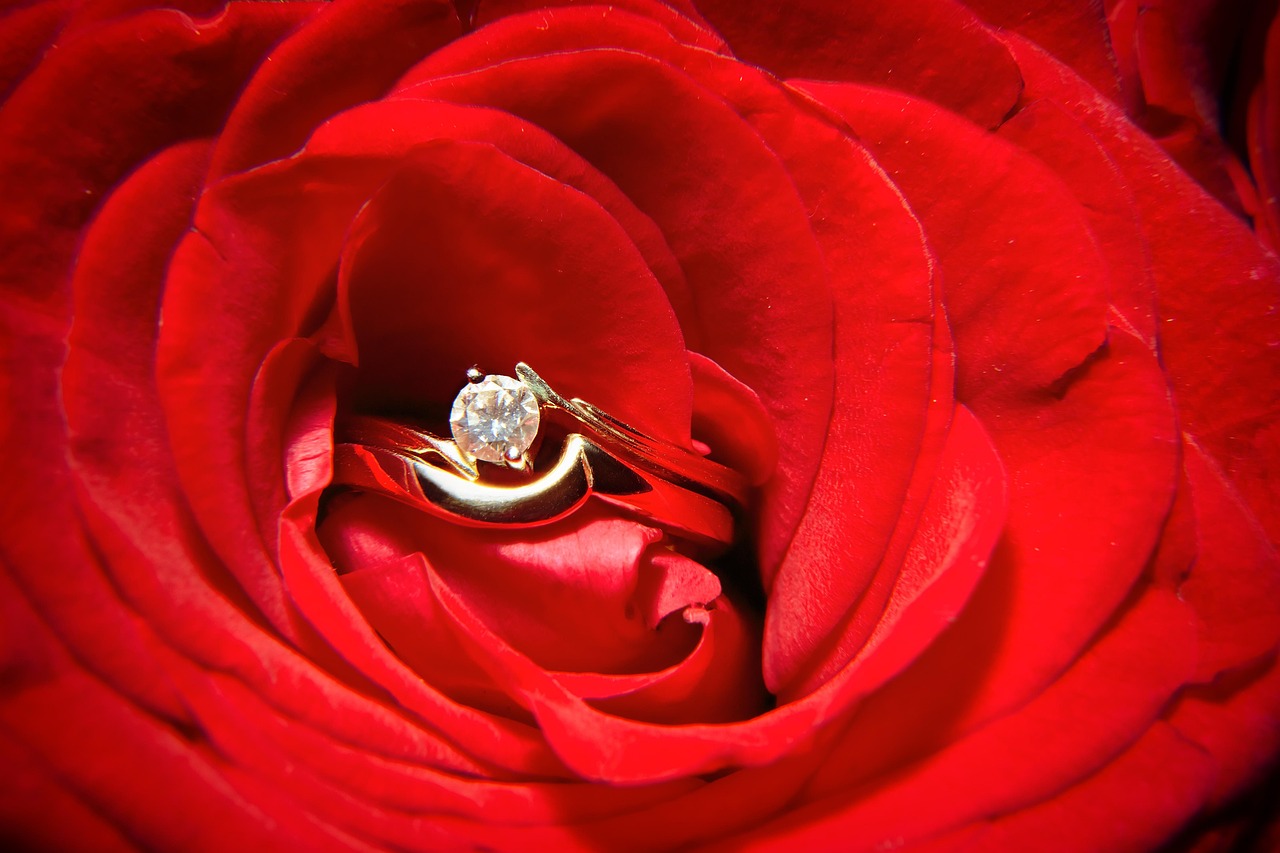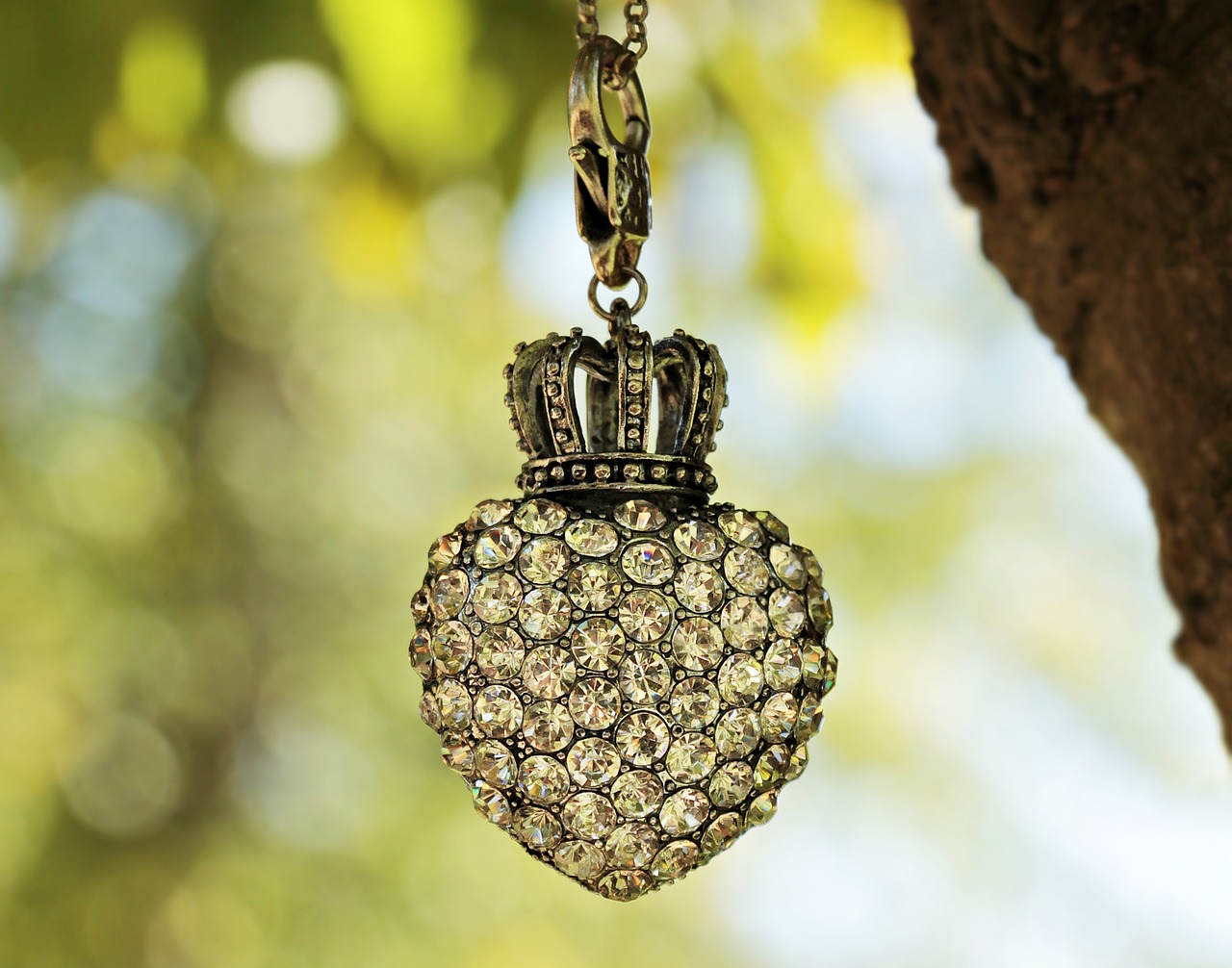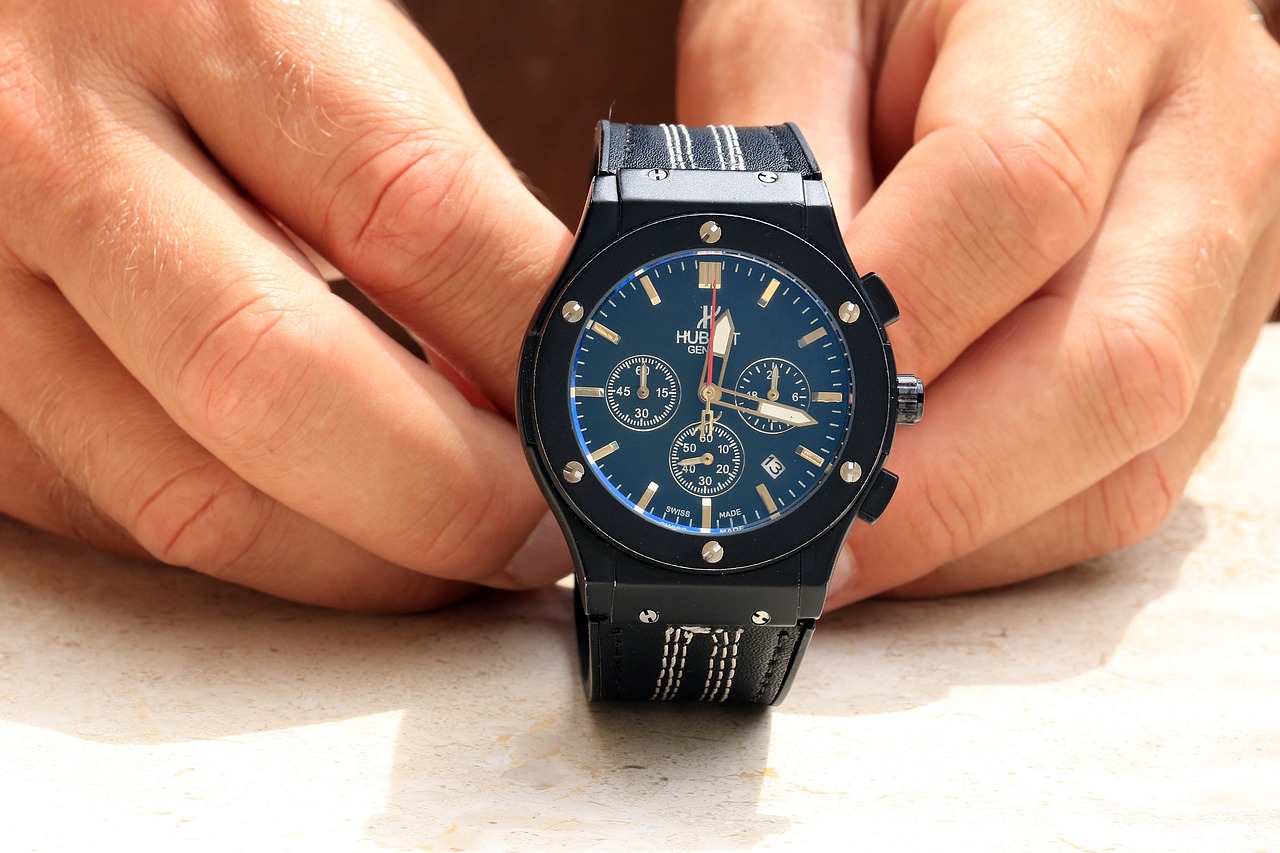Jewelry restoration is an art that breathes new life into old and damaged pieces, allowing them to shine once more. This process is not just about fixing broken items; it’s about preserving memories and enhancing the sentimental value of cherished belongings. In the United States, numerous skilled professionals offer expert jewelry restoration services, employing a variety of techniques tailored to each unique piece. This article delves into the intricacies of jewelry restoration, the techniques utilized, and tips on selecting the right expert for your needs.
Jewelry restoration encompasses a range of services aimed at repairing and rejuvenating pieces that may have lost their original charm. This can include:
- Cleaning: Removing dirt and tarnish to restore shine.
- Resizing: Adjusting the fit of rings and bracelets.
- Replacing components: Fixing or replacing missing stones, clasps, or links.
Restoration not only enhances the aesthetic appeal of your jewelry but also prolongs its lifespan. Whether it’s a family heirloom or a treasured gift, restoring these pieces can bring back their luster and emotional significance. Furthermore, a well-restored piece can hold or even increase its value over time.
Experts utilize various techniques in the restoration process, including:
- Polishing: This method removes surface scratches and tarnish, revitalizing the piece.
- Soldering: Used for repairing broken clasps or chains, ensuring durability.
- Stone Replacement: Involves sourcing and replacing missing or damaged gemstones.
Finding a qualified jewelry restoration expert is crucial for achieving optimal results. Here are key factors to consider:
- Experience: Look for professionals with a robust background in jewelry design and restoration.
- Certifications: Verify any relevant qualifications or memberships in professional organizations.
- Customer Reviews: Read testimonials to gauge the quality of their work.
The cost of restoration can vary significantly based on several factors:
- Complexity: Intricate designs or extensive repairs may incur higher costs due to the time and skill required.
- Materials: The quality of gemstones and metals used in the restoration can impact the overall price.
Once your jewelry has been restored, proper maintenance is essential to keep it looking its best:
- Regular Cleaning: Use gentle methods to avoid damaging the piece.
- Safe Storage: Store your jewelry in soft pouches or dedicated boxes to prevent scratches.
Research is key to locating top-notch jewelry restoration services. Consider both local and online options:
- Local Services: Offer personalized consultations and face-to-face interactions.
- Online Services: Provide convenience and a broader range of options, often with customer reviews available.
By evaluating service portfolios and looking for before-and-after images, you can assess the quality of work produced by restoration experts. This scrutiny will help ensure that your precious jewelry is in capable hands.
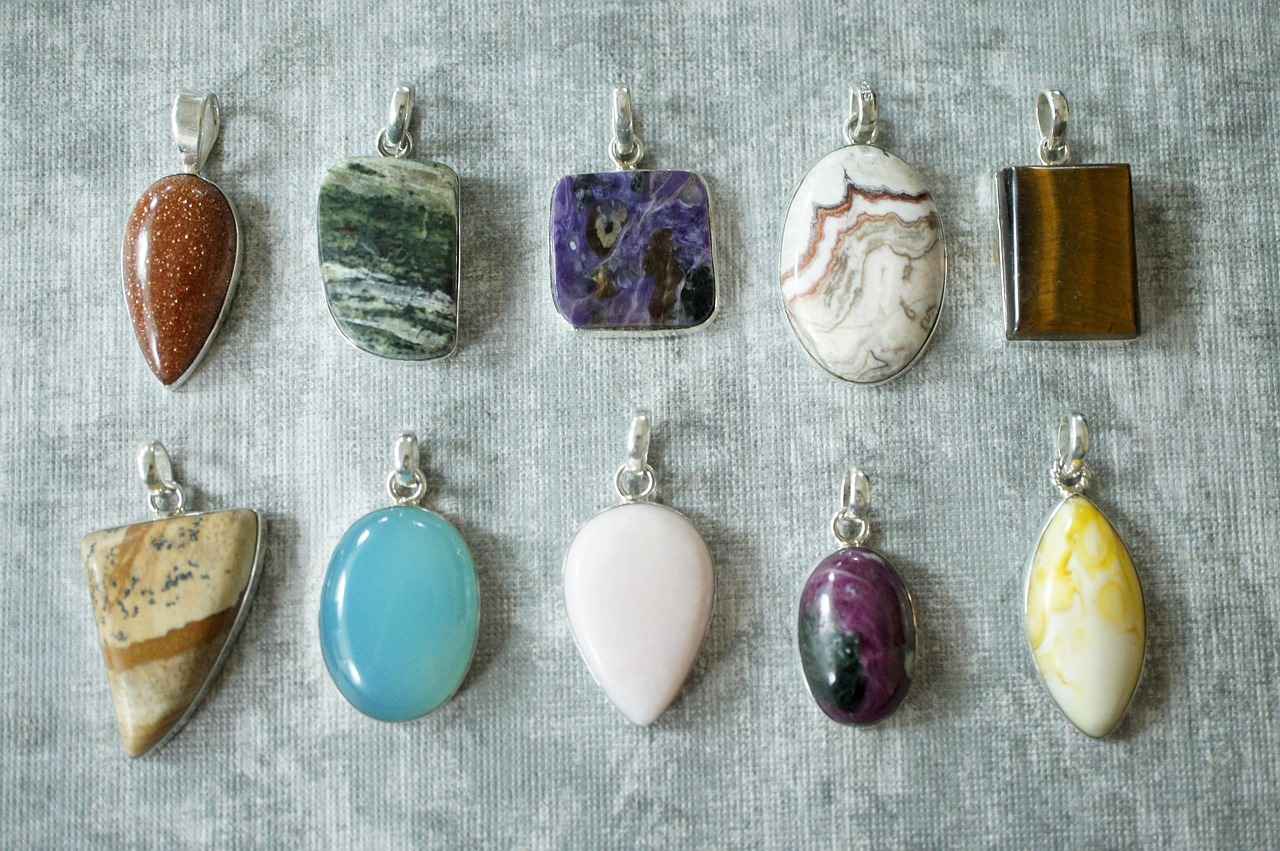
What is Jewelry Restoration?
Jewelry restoration is a meticulous process that breathes new life into old or damaged pieces, transforming them back to their former glory. This art form is not merely about fixing broken items; it encompasses a range of techniques aimed at enhancing the beauty and functionality of jewelry that may have lost its luster over time. Whether it’s an antique piece passed down through generations or a modern accessory that has seen better days, restoration can be the key to preserving its history and significance.
The restoration process typically begins with a thorough assessment of the piece. Experts evaluate the condition of the jewelry, identifying any areas that require attention, such as scratches, tarnish, or missing components. This initial step is crucial as it sets the stage for the appropriate restoration techniques to be employed.
Understanding the importance of jewelry restoration can significantly enhance your appreciation for these cherished items. Restoring jewelry not only revives its physical appearance but also reinforces its emotional value. Family heirlooms, for instance, carry stories and memories that can be preserved through careful restoration. Moreover, restoring damaged pieces can prevent further deterioration, ensuring they remain wearable and visually appealing for years to come.
Jewelry restoration encompasses several specialized techniques tailored to the unique needs of each piece:
- Cleaning: This is often the first step in restoration, involving the removal of dirt, grime, and tarnish. Experts use gentle cleaning solutions and tools to avoid damaging delicate materials.
- Resizing: For rings that no longer fit, resizing is a common procedure. Jewelers can either add or remove material to ensure a perfect fit.
- Soldering: This technique is essential for repairing broken chains or clasps. Skilled artisans use precise soldering methods to ensure repairs are strong and virtually invisible.
- Stone Replacement: If gemstones are missing or damaged, jewelers can replace them with stones that match the original, restoring the piece’s integrity.
Selecting the right professional for jewelry restoration is vital to achieving desirable results. Here are some tips to guide your decision:
- Experience: Look for jewelers with a proven track record in restoration. Their experience can significantly affect the quality of the work.
- Certifications: Professionals with relevant certifications are often more knowledgeable about the latest restoration techniques and materials.
- Customer Reviews: Reading testimonials can provide insights into the quality of service and customer satisfaction.
The cost of jewelry restoration can vary based on several factors, including:
- Complexity: Intricate designs or extensive repairs typically require more time and expertise, leading to higher costs.
- Materials: The quality of materials used in the restoration process can also impact pricing. High-quality gemstones and metals are essential for maintaining the piece’s value.
In summary, jewelry restoration is a valuable service that not only enhances the aesthetic appeal of your treasured pieces but also preserves their sentimental significance. By understanding the restoration process and choosing the right expert, you can ensure that your jewelry remains a cherished part of your life for years to come.
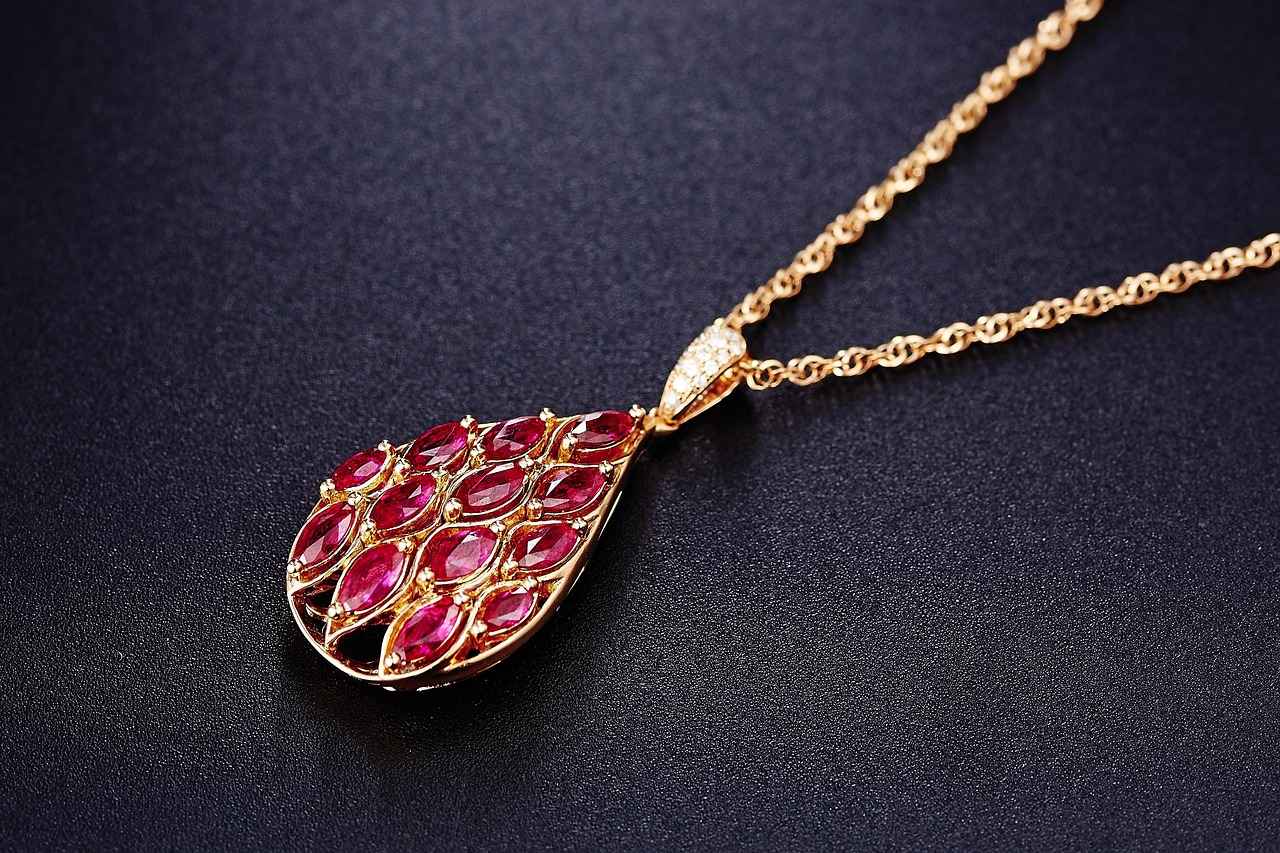
Why Should You Consider Jewelry Restoration?
Jewelry, often laden with sentimental value, represents more than just adornment; it tells a story, carries memories, and marks significant life events. Over time, however, these cherished pieces can lose their luster due to wear and tear. This is where jewelry restoration comes into play, offering a chance to breathe new life into your beloved items. In this section, we will explore the reasons why you should consider jewelry restoration.
Restoring your jewelry can significantly enhance its sentimental value and prolong its lifespan. Whether it’s a family heirloom passed down through generations or a cherished gift from a loved one, restoration can bring back its original beauty and meaning.
- Preservation of Memories: Each piece of jewelry often carries a story. Restoration allows you to preserve those memories by ensuring that the item remains in excellent condition for years to come.
- Enhanced Aesthetic Appeal: Over the years, jewelry can become tarnished or damaged. Restoration processes such as cleaning, polishing, and repairing can restore its shine and brilliance, making it look as good as new.
- Increased Longevity: Regular wear can lead to structural weaknesses in jewelry. By addressing these issues through restoration, you can prolong the life of your pieces, allowing you to enjoy them for many more years.
- Customization Opportunities: Restoration can also provide an opportunity for customization. If you have a piece that you love but feel could use a modern touch, a skilled jeweler can help you redesign or update it while maintaining its original essence.
- Value Retention: For valuable pieces, restoration can help maintain or even increase their market value. A well-restored piece is often more appealing to potential buyers, should you ever decide to sell.
Moreover, the restoration process can be a rewarding experience. Many people find joy in seeing their jewelry transformed, as it not only recaptures the item’s beauty but also reinforces its significance in their lives. The act of restoring can also serve as a reminder of the special moments associated with the piece.
When considering jewelry restoration, it is essential to choose a professional with experience and expertise. Look for jewelers who specialize in restoration, as they will have the necessary skills and techniques to handle various materials and styles. This ensures that your treasured items are in capable hands.
In summary, the decision to restore your jewelry is not merely about aesthetics—it’s about preserving the stories and emotions tied to each piece. By engaging in jewelry restoration, you can enhance its sentimental value, prolong its lifespan, and keep the memories alive for future generations.
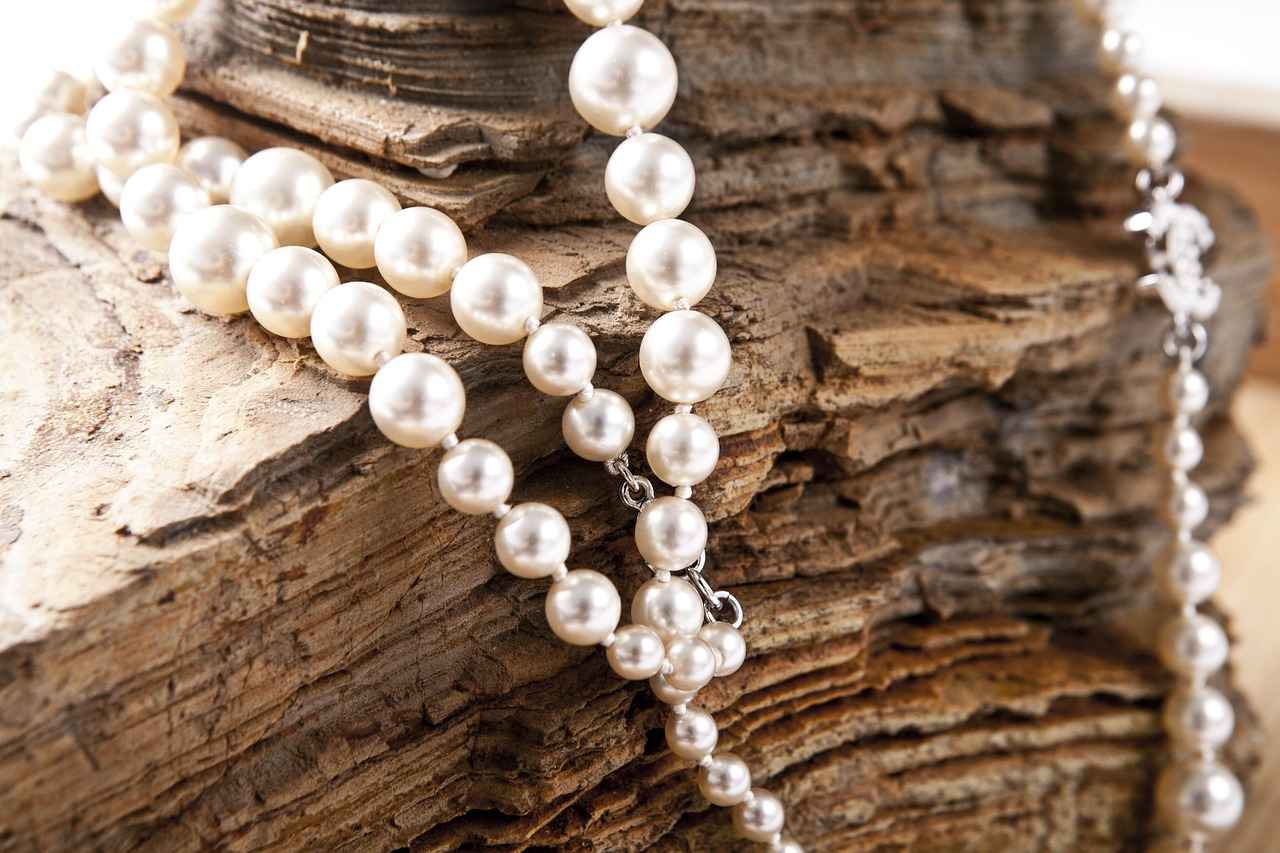
Common Jewelry Restoration Techniques
Jewelry restoration is an art that requires a deep understanding of materials, techniques, and the history behind each piece. In this section, we will explore the common techniques used in jewelry restoration, helping you understand how each method plays a vital role in bringing your cherished items back to life.
Restoration techniques can vary widely depending on the type of jewelry and the extent of damage. Here are some of the most common methods:
- Polishing: This technique involves using specialized tools and compounds to remove scratches, tarnish, and other imperfections from the surface of the jewelry. Polishing not only enhances the shine but also helps to maintain the integrity of the piece.
- Soldering: Soldering is a critical technique for repairing broken components, such as chains, clasps, or settings. Skilled artisans use precise methods to ensure that the repairs are durable and nearly invisible, preserving the aesthetic of the original design.
- Stone Replacement: If a gemstone is lost or damaged, replacement is often necessary. Jewelers carefully select stones that match the original in color, size, and quality, ensuring that the restored piece retains its value and beauty.
- Resizing: Resizing is essential for rings that no longer fit properly. This process may involve adding or removing metal to achieve the desired size while maintaining the ring’s original design.
- Cleaning: Thorough cleaning is often the first step in restoration. Techniques may include ultrasonic cleaning or steam cleaning to remove dirt and debris without damaging the jewelry.
Each restoration technique serves a specific purpose, and understanding these can help you appreciate the craftsmanship involved:
- Preservation of Value: Proper restoration techniques can significantly enhance the value of your jewelry. By using high-quality materials and skilled craftsmanship, you ensure that the piece remains a valuable asset.
- Sentimental Significance: Many pieces of jewelry carry deep emotional connections. Restoration allows you to preserve these memories while ensuring that the piece can be worn and enjoyed for years to come.
- Maintaining Aesthetic Appeal: Restoration techniques are designed to enhance the visual appeal of the jewelry. A well-restored piece can look as stunning as it did on the day it was first made.
Choosing the right restoration technique depends on various factors:
- Type of Damage: Assess the type and extent of damage to determine which technique is most appropriate. For example, a scratched surface may require polishing, while a broken chain will need soldering.
- Material Composition: Different materials may require specific techniques. For instance, gold and silver have different soldering requirements, and certain stones may be more sensitive to cleaning methods.
- Expert Consultation: Consulting with a professional jeweler can provide valuable insights. They can recommend the best techniques based on their expertise and the specific needs of your piece.
In conclusion, understanding common jewelry restoration techniques is essential for anyone looking to breathe new life into their treasured items. Whether you are considering restoration for a family heirloom or a modern piece, knowing the methods available can help you make informed decisions and ensure that your jewelry remains a lasting symbol of beauty and sentiment.
Polishing and Cleaning
are pivotal processes in the jewelry restoration journey. These techniques not only enhance the aesthetic appeal of your jewelry but also play a crucial role in preserving its structural integrity. When done correctly, polishing and cleaning can rejuvenate even the most tarnished and dull pieces, allowing them to regain their former glory.
Polishing is a meticulous process that involves the removal of surface imperfections and tarnish from jewelry. This process can be accomplished through various methods, including:
- Mechanical Polishing: Utilizing polishing wheels and compounds to buff the surface.
- Chemical Polishing: Applying specific solutions that chemically react with the tarnish.
- Hand Polishing: Using soft cloths and gentle abrasives to carefully restore shine.
Each method has its unique advantages, and the choice often depends on the material of the jewelry and the extent of tarnish.
Cleaning is an equally essential step that prepares your jewelry for polishing. It removes dirt, oil, and grime that accumulate over time. Some popular cleaning methods include:
- Ultrasonic Cleaning: Using high-frequency sound waves to create tiny bubbles that dislodge dirt.
- Steam Cleaning: Employing high-pressure steam to clean intricate designs.
- Soaking in Soapy Water: A simple yet effective method for less delicate pieces.
Regular cleaning not only enhances the appearance of your jewelry but also helps in identifying any potential issues, such as loose stones or damaged settings.
The frequency of polishing and cleaning largely depends on how often you wear your jewelry. For frequently worn pieces, a thorough cleaning every few months is advisable, while polishing might be needed once or twice a year. For jewelry that is worn less often, a gentle cleaning before wearing can suffice.
While some cleaning methods can be safely performed at home, such as using mild soap and water, polishing should be approached with caution. Many home polishing kits can be abrasive and may damage delicate pieces. It is often best to consult with a professional jeweler for polishing, especially for intricate designs or valuable items.
Engaging a professional for polishing and cleaning offers several advantages:
- Expertise: Professionals have the experience and knowledge to handle various materials and designs.
- Specialized Equipment: Access to advanced tools and techniques that ensure a thorough and safe restoration.
- Quality Assurance: Professionals can identify and address potential issues that may not be visible to the untrained eye.
By entrusting your jewelry to experts, you ensure that it not only looks beautiful but is also structurally sound.
In summary, are critical components of jewelry restoration that can significantly enhance the appearance and longevity of your cherished pieces. By understanding the processes involved and the importance of professional care, you can keep your jewelry looking its best for years to come.
Soldering and Repairing Broken Pieces
Soldering is a vital technique in the realm of jewelry restoration, particularly when it comes to fixing broken chains, clasps, and other components. This method involves the application of heat to melt a filler metal, which then bonds the broken pieces together as it cools. Skilled artisans utilize this technique to ensure that repairs are not only strong but also nearly invisible, preserving the aesthetic appeal of the jewelry.
When a piece of jewelry breaks, it can be disheartening, especially if it holds sentimental value. A well-executed soldering job can restore the integrity of the piece, allowing it to be worn and cherished once again. The process requires a high level of precision, as the artisan must carefully align the broken ends before applying the solder. This meticulous attention to detail ensures that the repair is seamless and maintains the original design of the jewelry.
There are several important factors that a professional jeweler considers when performing soldering:
- Type of Metal: Different metals require different soldering techniques. For instance, gold, silver, and platinum each have unique properties that affect how they should be soldered.
- Thickness of the Material: Thicker materials may need more heat and time to solder effectively, while thinner pieces require a gentler approach to avoid damage.
- Type of Solder: Jewelers use various types of solder, including hard, medium, and easy solder, depending on the specific needs of the repair.
In addition to fixing chains and clasps, soldering can also be used to:
- Reattach Stones: If a gemstone has come loose, soldering can help secure it back into its setting.
- Repair Clasps: Clasps that have broken can be effectively repaired through soldering, ensuring that the piece remains functional.
- Reconnect Broken Links: In chain jewelry, individual links may break, and soldering can reconnect them without compromising the overall design.
For those considering jewelry restoration, it’s crucial to seek out a professional with experience in soldering. Look for artisans who have a strong portfolio showcasing their work, particularly in soldering repairs. Customer reviews can also provide insight into their expertise and reliability.
In conclusion, soldering is an indispensable technique in jewelry restoration that not only repairs broken pieces but also helps maintain the beauty and integrity of cherished items. By entrusting your jewelry to skilled artisans, you can ensure that your beloved pieces are restored to their former glory, ready to be worn and admired for years to come.
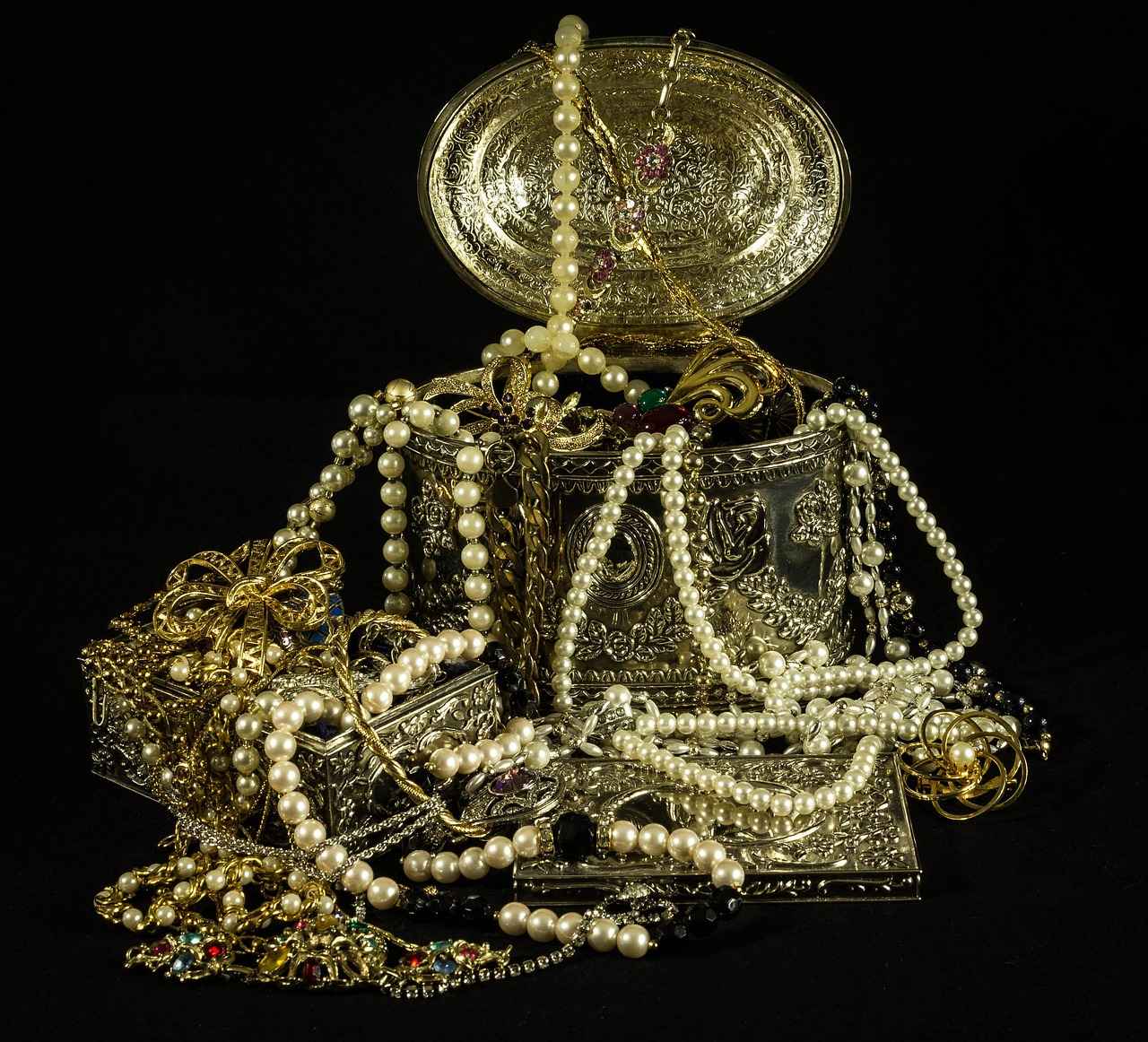
How to Choose the Right Jewelry Restoration Expert?
Choosing the right jewelry restoration expert is a significant decision that can greatly affect the outcome of your treasured pieces. Whether you have a family heirloom or a modern piece that needs some care, the right professional can make all the difference. Here are some important factors to consider when selecting a qualified jewelry restoration expert.
When it comes to jewelry restoration, experience is crucial. An expert with years of practice is likely to have encountered a variety of issues and is better equipped to handle complex repairs. Look for professionals who have a background in jewelry design and restoration, as they will possess the necessary skills to restore your piece effectively.
Another key aspect to consider is the certifications and training of the jewelry restoration expert. Many reputable professionals have undergone formal training and hold certifications from recognized institutions. This not only demonstrates their commitment to the craft but also assures you that they adhere to industry standards.
Reading customer reviews can provide valuable insights into the quality of service offered by a restoration expert. Look for testimonials that highlight successful restorations, customer satisfaction, and overall experiences. Websites, social media, and local business directories can be excellent sources for finding honest reviews.
A reputable jewelry restoration expert should have a portfolio showcasing their previous work. This can include before-and-after photos of restored pieces, which will give you a clear idea of their capabilities. Pay attention to the attention to detail and the quality of the work presented in their portfolio.
Before making a final decision, consider scheduling a consultation. This meeting allows you to ask questions about the restoration process, materials used, and estimated timelines. It’s also an opportunity to gauge the expert’s communication style and willingness to address your concerns. Important questions to ask include:
- What is your experience with similar pieces?
- What techniques do you use for restoration?
- How do you ensure the integrity of the original piece?
- What is the estimated cost and timeline for my restoration?
Understanding the cost factors involved in jewelry restoration is essential. Prices can vary significantly based on the complexity of the restoration and the materials required. Be wary of quotes that seem too good to be true, as this may indicate a lack of quality or experience. A skilled professional will provide a transparent breakdown of costs and explain the rationale behind them.
Finally, inquire about follow-up care and maintenance after the restoration is complete. A good restoration expert will offer advice on how to care for your newly restored jewelry to ensure its longevity. This can include cleaning tips and recommendations for safe storage.
In conclusion, selecting the right jewelry restoration expert involves careful consideration of their experience, qualifications, customer feedback, and communication. By taking the time to research and evaluate potential professionals, you can ensure that your cherished pieces receive the best possible care and restoration.
Checking Credentials and Experience
When it comes to jewelry restoration, ensuring that your precious pieces are in capable hands is paramount. The process of restoring jewelry can be delicate and intricate, requiring a skilled touch and an eye for detail. Before you decide to entrust your beloved items to a professional, it is essential to verify their credentials and experience.
Credentials serve as a benchmark for assessing a professional’s expertise in the field. A qualified jewelry restoration expert typically has undergone extensive training and possesses certifications that validate their skills. These credentials can include:
- Formal Education: Many experts have degrees in jewelry design or gemology.
- Certifications: Look for certifications from recognized institutions, such as the Gemological Institute of America (GIA).
- Workshops and Continued Education: Ongoing training ensures that professionals stay updated with the latest techniques and technologies in jewelry restoration.
While credentials are vital, experience plays an equally important role in determining the quality of restoration work. Here are some factors to consider when evaluating an expert’s experience:
- Years in the Industry: A professional with several years of hands-on experience is likely to have encountered various restoration challenges and developed effective solutions.
- Specialization: Some experts focus on specific types of jewelry, such as antique or modern pieces. Ensure their specialization aligns with your needs.
- Portfolio of Past Work: Review their previous restorations to gauge the quality of their craftsmanship and attention to detail.
When consulting a potential jewelry restoration expert, asking the right questions can help you assess their qualifications:
- What formal training have you completed in jewelry restoration?
- Can you provide references or testimonials from past clients?
- What types of restoration techniques do you specialize in?
- Do you have a portfolio of your work that I can review?
Entrusting your jewelry to an unqualified individual can lead to disastrous outcomes, including further damage or loss of value. By verifying credentials and experience, you minimize these risks and increase the likelihood of a successful restoration.
Choosing the right jewelry restoration expert is crucial for preserving the integrity and beauty of your pieces. By focusing on credentials, experience, and asking the right questions, you can ensure that your jewelry is restored to its former glory. Remember, a well-restored piece not only enhances its aesthetic appeal but also maintains its sentimental value for years to come.
Reading Customer Reviews and Testimonials
When considering jewelry restoration, one of the most valuable resources at your disposal is customer reviews and testimonials. These insights can significantly influence your decision-making process by providing a glimpse into the quality of service offered by various restoration experts.
Why Are Customer Reviews Important?
Customer reviews serve as a reflection of the experiences of past clients. They can reveal the strengths and weaknesses of a restoration service, allowing potential customers to make informed choices. A collection of positive testimonials often indicates a reliable professional who consistently meets or exceeds client expectations.
What to Look for in Customer Testimonials?
- Successful Restorations: Look for reviews that specifically mention successful restorations. These testimonials often highlight the expertise of the jeweler and their ability to handle various types of jewelry.
- Customer Satisfaction: Pay attention to comments about customer service. A restoration expert who prioritizes client satisfaction is more likely to provide a pleasant experience.
- Attention to Detail: Reviews that emphasize meticulous work and attention to detail can indicate a jeweler’s commitment to quality.
Where to Find Reliable Customer Reviews?
There are several platforms where you can find authentic customer reviews:
- Google Reviews: A great starting point for gauging customer satisfaction.
- Yelp: This platform specializes in local business reviews and can provide detailed insights.
- Social Media: Platforms like Facebook often showcase reviews and ratings, offering a more personal view of customer experiences.
How to Interpret Customer Feedback?
While reading reviews, it’s essential to consider the overall sentiment rather than focusing solely on individual comments. A mix of positive and negative reviews can provide a balanced perspective. Look for trends in feedback—if multiple customers mention similar issues, it may be worth taking note.
Engaging with Customer Testimonials:
Don’t hesitate to reach out to previous clients if possible. Many restoration experts will have references available upon request. Speaking directly with past customers can give you a deeper understanding of their experience and the quality of the work performed.
Final Thoughts on Customer Reviews:
In the world of jewelry restoration, customer reviews and testimonials are invaluable tools for potential clients. They provide insight into the quality of service and help you make an informed decision. By carefully evaluating feedback and considering the experiences of others, you can find a restoration expert who will treat your precious pieces with the care and expertise they deserve.
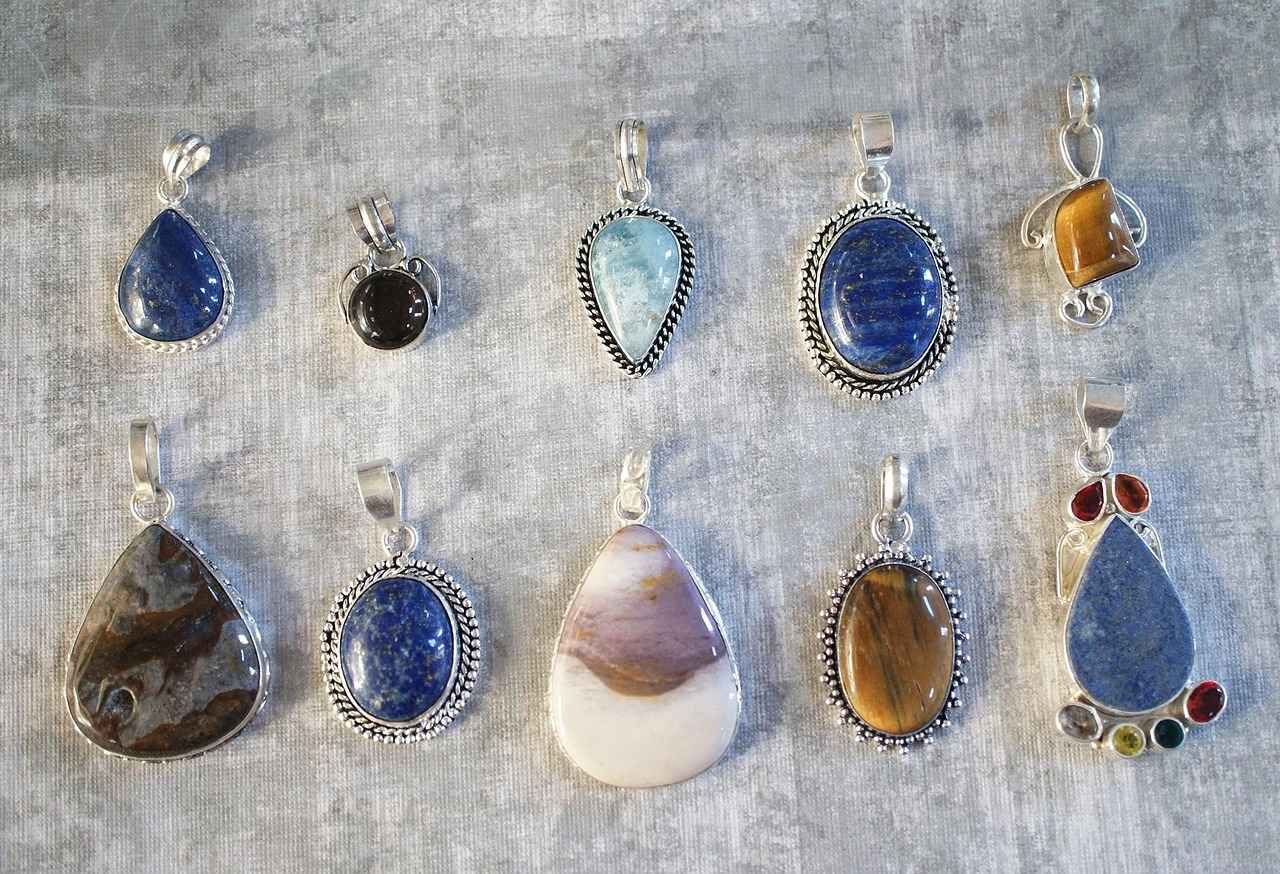
Cost Factors in Jewelry Restoration
When it comes to jewelry restoration, understanding the cost factors involved is essential for anyone looking to breathe new life into their cherished pieces. The prices associated with restoration can vary significantly based on a variety of elements, making it crucial to budget accordingly. This article delves into the various aspects that influence the cost of jewelry restoration, helping you make informed decisions.
Several key factors determine the overall cost of restoring your jewelry. These include:
- Complexity of the Restoration
- Materials Used
- Labor Intensity
- Expertise of the Artisan
The complexity of the restoration process is one of the primary factors that will affect the cost. Simple repairs, such as resizing a ring or replacing a clasp, generally cost less than intricate restorations that involve detailed work. For instance, restoring an antique piece with delicate filigree may require more time and specialized skills, resulting in higher prices. It’s advisable to get a detailed estimate from the restoration expert before proceeding.
The materials involved in the restoration play a significant role in determining the overall cost. High-quality gemstones, precious metals, and other materials can substantially increase expenses. For example, replacing a diamond or a rare gemstone will not only involve the cost of the stone itself but also the labor required to ensure it is set securely and beautifully. Therefore, it’s essential to consider the quality of materials used in the restoration process to maintain the piece’s value.
The labor intensity of the restoration process can also significantly influence the cost. More complex restorations that require extensive craftsmanship will naturally take longer and demand higher fees. For instance, intricate soldering or stone setting requires a skilled artisan’s attention, which can add to the overall expense. It’s important to discuss the estimated time frame with your chosen expert, as this will give you a better understanding of the associated costs.
The expertise of the jewelry restoration professional can greatly impact the price. Experienced artisans with a solid track record may charge more for their services, but they often deliver superior results. When selecting a restoration expert, consider their qualifications, portfolio, and customer reviews. Investing in a skilled professional can save you money in the long run by ensuring that your jewelry is restored correctly the first time.
Before committing to any restoration work, it’s wise to obtain detailed quotes from multiple professionals. These estimates should break down the costs associated with labor, materials, and any additional services. This transparency will help you compare options and make a more informed decision. Don’t hesitate to ask questions about any part of the estimate that seems unclear, as a reputable expert will be happy to explain the costs involved.
In summary, understanding the various cost factors in jewelry restoration can help you budget effectively and ensure that your treasured pieces receive the care they deserve. By assessing the complexity of the work, considering the materials used, evaluating the labor involved, and selecting the right expert, you can make informed decisions that align with your financial plans. Remember, investing in quality restoration not only enhances the beauty of your jewelry but also preserves its sentimental value for years to come.
Assessing the Complexity of the Restoration
The complexity of the jewelry restoration process plays a pivotal role in determining the overall cost. When evaluating restoration projects, it is essential to understand that intricate designs or extensive repairs demand more time, skill, and specialized knowledge. As a result, these factors can lead to significantly higher prices. This section delves into the various aspects that contribute to the complexity of restoration, helping you make informed decisions regarding your jewelry.
- Intricate Designs: Jewelry pieces with elaborate designs often require meticulous attention to detail. Skilled artisans must navigate through delicate components, ensuring that every aspect is restored to its former glory. This labor-intensive process can increase the cost due to the expertise required.
- Extensive Repairs: Items that have suffered severe damage, such as broken clasps, missing stones, or warped settings, necessitate comprehensive repairs. The more extensive the damage, the more time and resources are needed to restore the piece, which can significantly raise the price.
- Material Considerations: The type of materials involved in the restoration can also affect complexity. For instance, working with precious metals like gold or platinum, or rare gemstones often requires specialized techniques and tools, leading to higher costs.
- Restoration Techniques: Different restoration techniques vary in complexity. For example, soldering requires precision and skill, particularly when dealing with fine chains or intricate settings. The choice of technique directly impacts both the time taken and the associated costs.
Moreover, the expertise of the restoration professional plays a crucial role in the complexity assessment. An experienced jeweler may identify potential issues that less experienced individuals might overlook, leading to a more comprehensive restoration process. This expertise can justify higher fees, as the final results are often superior.
Another factor to consider is the timeframe for restoration. Complex pieces may require longer periods for thorough restoration, which can also influence pricing. A reputable jeweler will typically provide a detailed estimate that reflects both the time and materials needed for the job.
In summary, understanding the complexity of the restoration process is vital for anyone considering revitalizing their jewelry. By recognizing the factors that contribute to this complexity, you can better appreciate the costs involved and make informed choices when selecting a restoration expert. Whether it’s a cherished family heirloom or a piece with significant personal value, investing in quality restoration can ensure that your jewelry remains a treasured part of your collection for years to come.
Material Costs and Their Impact
When it comes to jewelry restoration, one of the most significant factors influencing the overall cost is the materials used in the process. The choice of gemstones and metals plays a critical role in determining not only the expenses involved but also the long-term value and quality of the restored piece.
The materials selected for restoration can dramatically affect the cost and outcome of the project. High-quality gemstones and precious metals, such as gold and platinum, often come with a higher price tag. However, investing in quality materials is essential for maintaining the integrity and value of the jewelry. For instance, using authentic diamonds instead of synthetic alternatives can significantly affect the piece’s resale value and aesthetic appeal.
- Gemstones: The type and quality of gemstones can vary widely. Natural stones are typically more expensive than synthetic ones, and rare stones, such as emeralds or sapphires, can further increase costs.
- Metals: The choice of metal is equally important. While silver is a more affordable option, gold and platinum are preferred for their durability and prestige.
- Alloys: Sometimes, metals are alloyed with other materials to enhance strength or color. The specific composition can affect both the cost and the restoration process.
When assessing the cost of restoration, one must consider the complexity of the materials involved. For instance, intricate designs may require specialized techniques and tools, which can add to the labor costs. Additionally, if a piece requires the replacement of multiple gemstones or metals, the cumulative cost can rise significantly.
While it may be tempting to opt for lower-quality materials to save on costs, this can lead to a decrease in the overall value of the jewelry. Restorers often emphasize that using high-quality materials not only ensures a more aesthetically pleasing result but also preserves the piece’s historical and sentimental value. In many cases, the investment in quality can pay off in the long run, both in terms of durability and resale potential.
When planning for jewelry restoration, it’s essential to establish a budget that reflects both your financial constraints and the desired outcome. Here are some tips to help you find the right balance:
- Get Multiple Quotes: Consult with several restoration experts to compare prices and services offered. This will help you gauge the average cost and make informed decisions.
- Prioritize Repairs: If your budget is limited, consider prioritizing essential repairs over cosmetic enhancements. This will allow you to maintain the piece’s integrity without overspending.
- Discuss Material Options: Communicate openly with your restoration expert about your budget and ask for recommendations on materials that provide a good balance between quality and cost.
In conclusion, understanding the impact of material costs in jewelry restoration is crucial for making informed decisions. By focusing on quality and carefully considering your options, you can ensure that your treasured pieces are restored to their former glory while also protecting their value for years to come.

Maintaining Your Restored Jewelry
Maintaining your restored jewelry is crucial to ensure that it retains its beauty and charm over time. After undergoing the restoration process, these precious pieces deserve ongoing care to keep them looking their best. In this section, we will explore effective strategies for regular cleaning and safe storage, which are essential for prolonging the life of your jewelry.
Regular cleaning of your jewelry is not just about aesthetics; it also plays a significant role in its longevity. Dirt, oils, and tarnish can accumulate over time, dulling the shine and potentially causing damage. Here are some effective cleaning practices:
- Gentle Cleaning Solutions: Use mild soap and warm water to clean your jewelry. Avoid harsh chemicals that can damage the materials.
- Soft Cloths: Always use a soft, lint-free cloth to gently buff your jewelry after cleaning. This helps maintain its luster.
- Professional Cleaning: Consider taking your jewelry to a professional cleaner periodically, especially for intricate pieces with gemstones.
Proper storage is key to protecting your restored jewelry from scratches, tarnish, and other environmental factors. Here are some tips for safe storage:
- Use Soft Pouches: Store each piece in a soft pouch to prevent scratching and tangling.
- Dedicated Jewelry Boxes: Invest in a quality jewelry box with compartments to keep pieces separated and organized.
- Avoid Humidity: Keep your jewelry in a cool, dry place. Humidity can accelerate tarnishing and degradation of materials.
If your restored jewelry features gemstones, special care is needed to keep them sparkling:
- Regular Inspection: Check for loose stones or damage regularly. Early detection can prevent further issues.
- Avoid Exposure to Chemicals: Remove jewelry before using household cleaners, swimming, or applying lotions and perfumes.
- Ultrasonic Cleaners: While effective, use these with caution as some gemstones may not be suitable for ultrasonic cleaning.
While some minor repairs can be done at home, it is generally best to consult a professional for significant issues. Here are some home maintenance tips:
- Simple Fixes: You can replace small clasps or tighten loose stones if you have the right tools and experience.
- DIY Cleaning: Use the gentle cleaning methods mentioned earlier for routine maintenance.
- Leave Complex Repairs to Experts: For intricate repairs or restorations, always seek professional help to avoid further damage.
In summary, maintaining your restored jewelry involves a combination of regular cleaning and safe storage practices. By investing time and effort into caring for your pieces, you can ensure that their beauty and value are preserved for years to come. Whether it’s a cherished heirloom or a recent acquisition, treating your jewelry with the utmost care will keep it looking stunning and ready to wear.
Regular Cleaning Practices
Jewelry is not just an accessory; it often carries deep sentimental value and memories. To ensure that your cherished pieces maintain their beauty and integrity over time, it’s essential to adopt . This article delves into the importance of cleaning your jewelry, effective methods to do so, and tips for preserving its shine.
Regular cleaning is crucial for a variety of reasons:
- Prevents Tarnish: Jewelry made from metals like silver is prone to tarnishing. Regular cleaning helps to remove tarnish and restore the piece’s original luster.
- Removes Dirt and Oils: Daily wear can lead to the accumulation of dirt and oils, which can dull the shine of your jewelry. Cleaning removes these residues, keeping your pieces looking fresh.
- Prolongs Lifespan: By maintaining cleanliness, you reduce the risk of damage caused by dirt buildup, thus prolonging the life of your jewelry.
When it comes to cleaning, gentleness is key. Here are some effective methods:
- Soap and Water Solution: Mix a few drops of mild dish soap with warm water. Soak your jewelry for a few minutes, then gently scrub with a soft toothbrush to remove dirt.
- Microfiber Cloth: For quick touch-ups, use a microfiber cloth to wipe your jewelry. This method is excellent for removing smudges and fingerprints without scratching the surface.
- Ultrasonic Cleaners: For more thorough cleaning, consider using an ultrasonic cleaner. However, ensure that your jewelry is safe for this method, as some gemstones may be sensitive to ultrasonic waves.
While cleaning is essential, there are certain practices you should avoid:
- Harsh Chemicals: Avoid using bleach, ammonia, or other harsh chemicals, as they can damage the finish and integrity of your jewelry.
- Excessive Scrubbing: Be gentle when scrubbing; excessive force can scratch or damage delicate surfaces.
- Hot Water: Never use hot water for cleaning, as it can loosen stones and cause damage, especially in pieces with glued components.
The frequency of cleaning depends on how often you wear your jewelry:
- Daily Wear: If you wear your jewelry daily, consider cleaning it once a week to keep it looking its best.
- Occasional Wear: For pieces worn less frequently, a thorough cleaning every month or two should suffice.
In addition to regular cleaning, proper storage is essential for maintaining your jewelry’s condition:
- Soft Pouches: Store each piece in a soft pouch to prevent scratches and tangling.
- Jewelry Boxes: Use a dedicated jewelry box with compartments to keep your items organized and protected from environmental factors.
By implementing these , you can ensure that your restored jewelry remains as stunning as the day it was revitalized. Remember, gentle methods and proper storage are your best allies in maintaining the beauty and integrity of your cherished pieces.
Safe Storage Solutions
Safe Storage Solutions for Your JewelryStoring your jewelry properly is crucial to prevent damage and maintain its beauty over time. Whether you own a few cherished pieces or an extensive collection, understanding the best storage methods can significantly impact their longevity.
Proper storage is essential to avoid scratches, tarnishing, and other forms of damage that can occur when jewelry is not cared for correctly. Jewelry can be delicate, and environmental factors such as humidity, temperature fluctuations, and exposure to light can all affect its condition.
There are several effective storage solutions that can keep your jewelry safe and secure:
- Soft Pouches: Using soft pouches for individual pieces can prevent scratches and tangling. These pouches are usually made from materials like velvet or satin, which provide a gentle cushion.
- Dedicated Jewelry Boxes: Investing in a jewelry box designed specifically for storage can be beneficial. Look for boxes with compartments to keep items organized and separated, reducing the risk of damage.
- Anti-Tarnish Solutions: Consider using anti-tarnish strips or cloths in your storage container. These products help absorb moisture and prevent tarnishing, especially for silver jewelry.
An organized jewelry collection not only looks appealing but also makes it easier to find what you need. Here are some tips:
- Sort by Type: Group your jewelry by type—rings, necklaces, bracelets, and earrings. This method simplifies the process of locating specific pieces.
- Use Dividers: If your jewelry box doesn’t have compartments, consider using dividers or small trays to keep items separated and prevent them from scratching each other.
- Labeling: For larger collections, labeling compartments can help you quickly identify where each piece is stored.
The environment in which you store your jewelry plays a significant role in its preservation. Here are a few factors to consider:
- Humidity Control: Excess moisture can lead to tarnishing and mold growth. Store your jewelry in a cool, dry place, and consider using silica gel packets to absorb excess moisture.
- Temperature Stability: Avoid storing jewelry in places with extreme temperature fluctuations, such as attics or basements. A consistent temperature helps maintain the integrity of the materials.
- Light Exposure: Prolonged exposure to sunlight can fade gemstones and damage certain metals. Keep your jewelry stored in dark or shaded areas when not in use.
When traveling, ensuring the safety of your jewelry is paramount. Here are some practical tips:
- Travel Cases: Use a travel jewelry case that securely holds your pieces and prevents them from moving around during transit.
- Avoid Packing Valuable Items: If possible, leave valuable or sentimental pieces at home. Instead, take along items that are less irreplaceable.
- Insurance: Consider insuring your jewelry, especially if you travel frequently. This provides peace of mind in case of loss or theft.
By implementing these safe storage solutions, you can protect your jewelry from damage and ensure it remains a cherished part of your collection for years to come. Proper care and organization not only enhance the aesthetic appeal of your pieces but also preserve their value and significance.
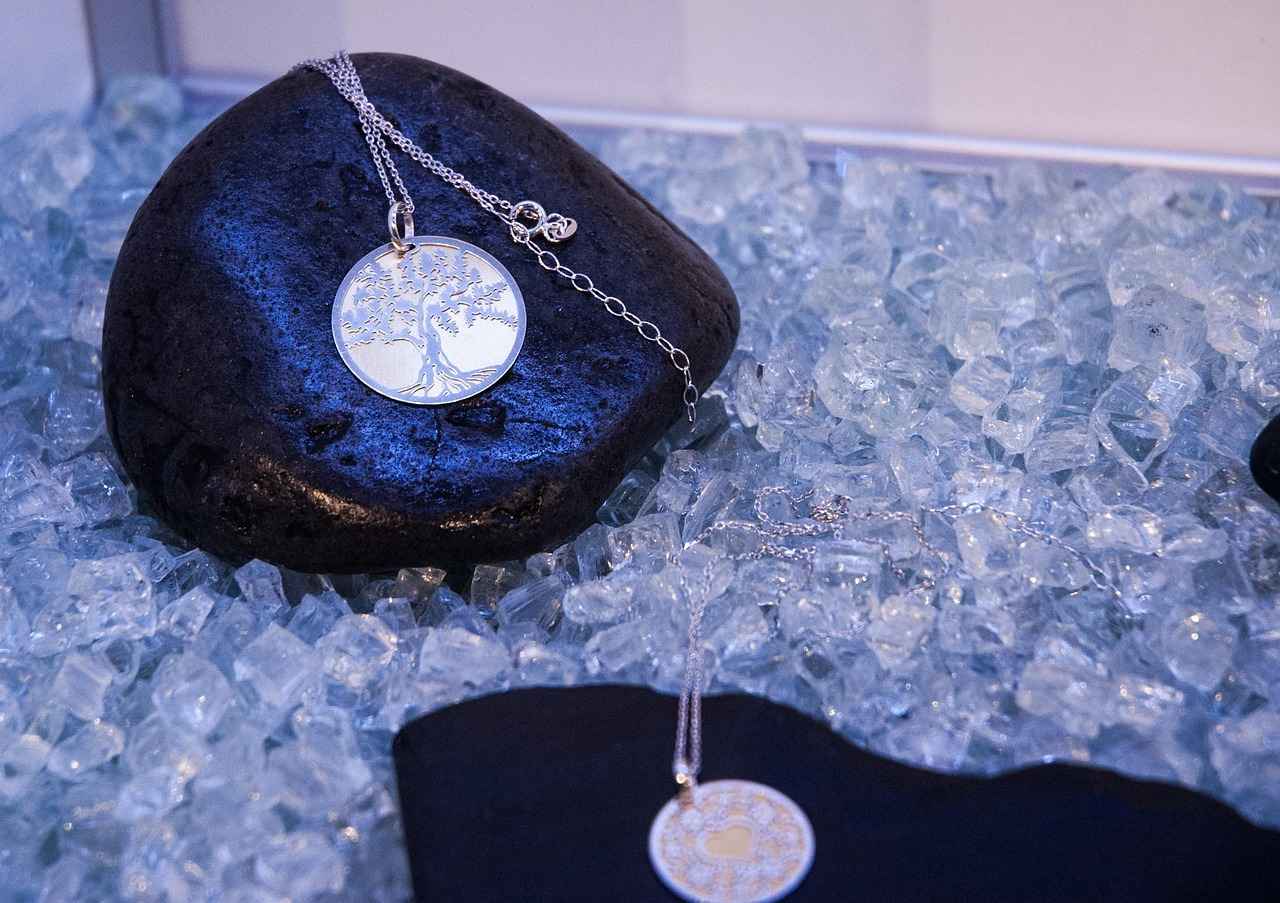
Finding the Best Jewelry Restoration Services in the U.S.
When it comes to preserving the beauty and value of your cherished jewelry pieces, finding the best jewelry restoration services in the U.S. is essential. With an array of options available, it may seem overwhelming to identify the right professionals for the job. However, by conducting thorough research and utilizing available resources, you can ensure that your jewelry receives the care it deserves.
Research plays a crucial role in locating top-notch jewelry restoration services. By exploring local options and considering online reviews, you can gather valuable insights into the quality of services offered. This process not only helps you find skilled artisans but also allows you to understand the different techniques they employ.
- Explore Local Options: Begin your search by identifying local jewelry restoration experts. Visiting nearby jewelry stores or artisan workshops can provide firsthand experience and allow you to discuss your needs directly.
- Utilize Online Platforms: Online platforms such as Yelp, Google Reviews, and specialized jewelry forums are excellent resources for finding reputable services. Look for professionals with high ratings and positive feedback.
- Ask for Recommendations: Personal recommendations from friends, family, or social media groups can lead you to trustworthy restoration experts. People who have had successful experiences can guide you in the right direction.
When reading customer reviews, pay attention to specific aspects that highlight the quality of service:
- Quality of Work: Look for testimonials that emphasize successful restorations and the overall satisfaction of clients.
- Communication: Reviews that mention clear communication and responsiveness indicate a professional who values customer service.
- Timeliness: Consider feedback regarding the turnaround time for restoration projects, as timely service is often a sign of a reliable expert.
Reviewing the service portfolios of potential restoration experts is another critical step. A well-curated portfolio showcases their skills and the range of services offered. Look for:
- Before-and-After Images: These images provide a visual representation of the expert’s capabilities and attention to detail.
- Variety of Restoration Techniques: A diverse portfolio indicates that the expert is adept at various restoration methods, ensuring they can handle different types of jewelry.
Deciding between local and online jewelry restoration services depends on your preferences and needs:
- Local Services: Offer the advantage of personal consultations, allowing you to discuss your specific needs face-to-face and build a relationship of trust.
- Online Services: Provide convenience and often a broader range of options. Many online services have established reputations and can ship your jewelry securely.
Cost is an important consideration when choosing a jewelry restoration service. Factors that influence pricing include:
- Complexity of Restoration: Intricate designs or extensive repairs typically require more time and expertise, which can increase costs.
- Materials Used: The quality of materials, such as gemstones and metals, can significantly impact overall expenses. Investing in high-quality materials is crucial for maintaining the piece’s value.
In summary, finding the best jewelry restoration services in the U.S. requires diligent research and careful consideration of various factors. By exploring local options, utilizing online reviews, and evaluating service portfolios, you can make an informed decision that will help restore your treasured pieces to their former glory.
Local vs. Online Services
When it comes to jewelry restoration, customers often face the dilemma of choosing between local experts and online services. Each option has its unique set of advantages that cater to different needs and preferences.
- Personal Touch of Local Experts: One of the most significant advantages of local jewelry restoration services is the opportunity for personal consultations. Meeting face-to-face with a skilled artisan allows you to discuss your specific needs, ask questions, and see their previous work firsthand. This personal interaction fosters trust and ensures that your cherished pieces are handled with care.
- Convenience of Online Services: On the other hand, online jewelry restoration services offer unparalleled convenience. With just a few clicks, you can access a wide range of services from various professionals across the country. This option is especially beneficial for those living in remote areas where local expertise may be limited. Additionally, many online services provide free shipping for sending your jewelry, making the process even more accessible.
- Broader Range of Options: Online platforms often showcase a broader range of restoration techniques and styles. You can easily compare prices, read reviews, and explore portfolios from multiple providers, all from the comfort of your home. This extensive selection allows you to find a specialist who aligns perfectly with your vision for your jewelry.
However, while the convenience of online services is appealing, it’s essential to consider potential downsides. For instance, sending your jewelry through the mail can be nerve-wracking, especially if the piece holds significant sentimental value. In contrast, local experts can provide immediate reassurance and direct feedback during the restoration process.
Another factor to consider is the turnaround time. Local jewelers may offer quicker service due to proximity, allowing you to have your piece restored and returned to you sooner. Conversely, online services might require longer processing times, as shipping can add days or even weeks to the overall timeline.
Ultimately, the choice between local and online jewelry restoration services depends on your individual needs and preferences. If you value personal interaction and immediate feedback, a local expert may be the best fit. However, if you prioritize convenience and a wider selection of options, online services could be the way to go. Whatever you choose, ensuring that the professional you select is experienced and trustworthy is paramount to achieving the best results for your treasured jewelry.
Evaluating Service Portfolios
When considering jewelry restoration, is a crucial step in ensuring you choose the right expert for your needs. A well-curated portfolio serves as a window into the capabilities and craftsmanship of restoration professionals. It allows potential clients to gauge the quality of work produced by these experts, which is essential for making an informed decision.
One of the most effective ways to assess a restoration expert’s skills is by examining their before-and-after images. These images provide a visual representation of their work, showcasing their ability to transform damaged or worn jewelry into stunning pieces that look brand new. Pay close attention to the details in these images; the precision of the restoration, the clarity of the gemstones, and the overall finish can speak volumes about the artisan’s expertise.
In addition to photographs, consider looking for case studies or detailed descriptions of previous projects. These narratives can give insight into the specific challenges faced during the restoration process and the techniques employed to overcome them. A good restoration expert will often highlight their problem-solving skills and the meticulous methods they use to ensure the integrity of the piece is maintained while enhancing its aesthetic appeal.
Another important aspect to evaluate is the variety of services offered. A well-rounded jewelry restoration service should provide a range of techniques, including polishing, soldering, stone replacement, and custom modifications. This versatility indicates a deep understanding of different materials and styles, allowing them to handle various types of jewelry, from vintage pieces to modern designs.
Furthermore, testimonials and reviews from previous clients can provide valuable insights into the overall customer experience. Look for feedback that emphasizes not only the quality of the restoration work but also the professionalism and communication skills of the expert. A reliable restoration service should prioritize customer satisfaction and be willing to address any concerns or questions you may have throughout the process.
Lastly, don’t forget to consider the certifications and affiliations of the restoration expert. Membership in professional organizations can be a good indicator of their commitment to quality and ongoing education in the field. Experts who stay updated on the latest techniques and trends are more likely to deliver exceptional results.
In summary, evaluating service portfolios is a vital step in your journey to restoring cherished pieces of jewelry. By closely examining before-and-after images, reading case studies, checking client testimonials, and considering the expert’s credentials, you can make a well-informed choice. This careful selection process will ensure that your treasured items receive the care and expertise they deserve, bringing them back to life with renewed beauty and significance.
Frequently Asked Questions
- What types of jewelry can be restored?
Almost any type of jewelry can be restored! Whether it’s a vintage ring, a broken necklace, or a pair of earrings with missing stones, skilled professionals can breathe new life into your cherished pieces.
- How long does the jewelry restoration process take?
The time required for restoration varies based on the complexity of the piece and the extent of the damage. Simple cleanings might take just a few days, while extensive repairs could take several weeks. It’s always best to ask your restoration expert for a timeline.
- Is jewelry restoration expensive?
The cost of jewelry restoration can vary widely depending on factors like the type of repairs needed and the materials involved. While some basic restorations can be quite affordable, intricate repairs may require a higher investment. Always request a quote before proceeding!
- Can I clean my restored jewelry at home?
Yes, but be cautious! Use gentle cleaning methods and avoid harsh chemicals that could damage your restored piece. Regular maintenance is key to keeping your jewelry looking fabulous!
- How can I find a reputable jewelry restoration expert?
Start by checking online reviews and testimonials. Ask friends or family for recommendations, and don’t hesitate to look at portfolios of past work. A reputable expert will have a solid track record of satisfied customers!

